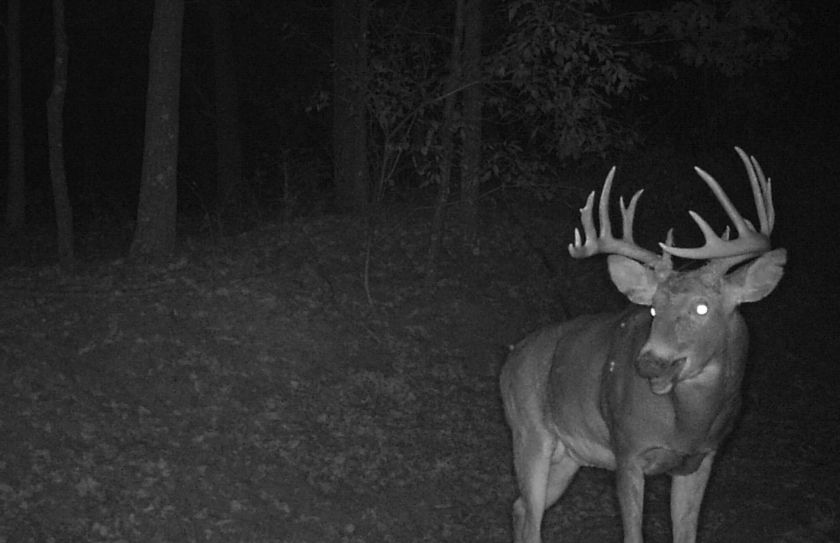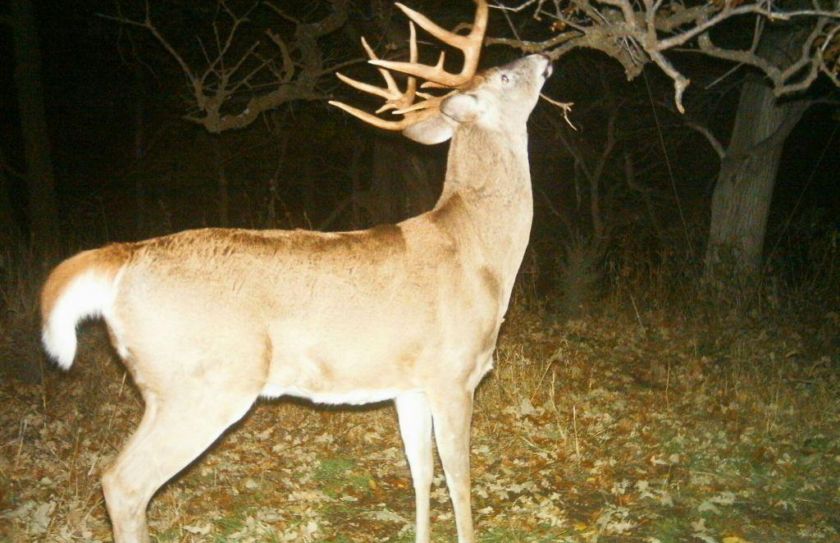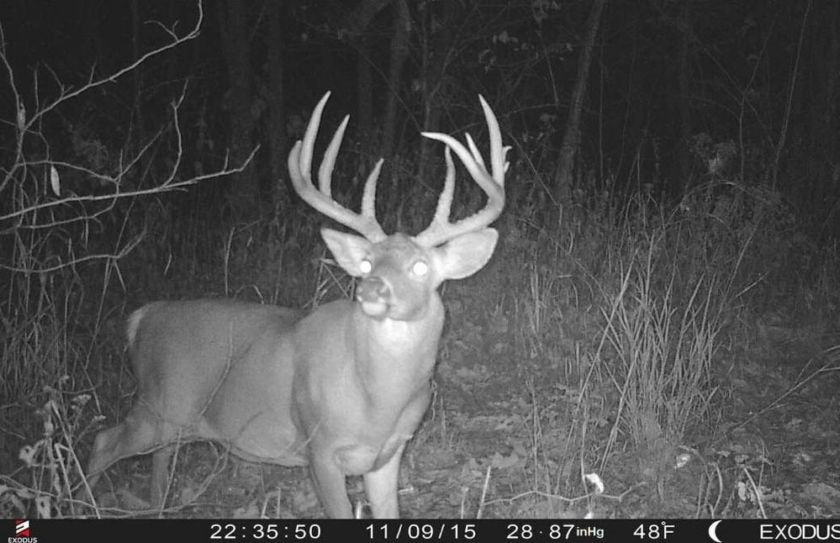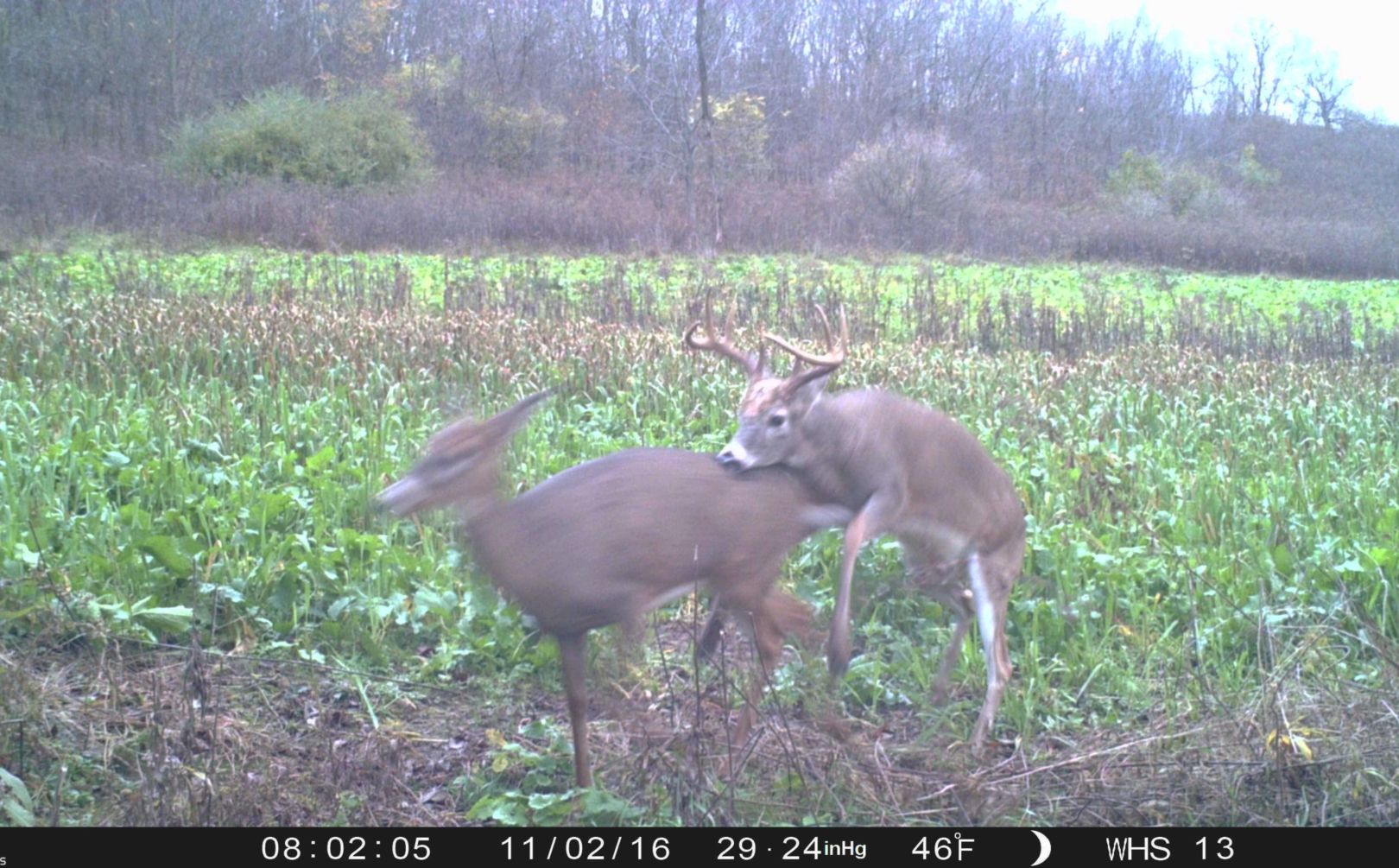
Should you use a trail cam? Well, I guess that depends if you want a more intimate look into mature buck behavior patterns, and to be able to predict which stand locations you should, or should not, be hunting. And those reasons are just the beginning! Now granted there is a cost for using trail cams that could be prohibitive to some. For others, the advancements of technology in hunting, crosses their inner code of historical fair chase practices. Both of those concerns I can fully understand, and I just have respectfully say, "to each his own". However, there is another group that I lack any understanding for and don't mind potentially ruffling some feathers, because they are the folks that do not use a trail cam for fear of spooking game. Really, if your only reason for not using trail cams this coming season, is because you don't want to spook game, than you are missing an incredible opportunity to capture a much higher level of potential hunting success. In fact, the balance of risk and reward is not even close. But even if you do use a trail cam often, are you fully realizing its potential?

*My Whitetail Success by Design trilogy of books, offers you the complete line-up of habitat, herd, trail cam and hunting strategies. There are also over 100 reviews on Amazon, so make sure to check those out as well!
Do you use these advanced trail cam strategies?
There are some "bread and butter" trail cam tactics that I employ each year, and when they are applied correctly, I have experienced that they increase the odds of success for my habitat, herd and hunting opportunities, by several times. In fact I rely on these tactics for both my passion for all things whitetails, and my career! Here are my top 5 reasons that you should use a trail cam this season:
1. Individual stand and buck patterning
-Currently, I use 3 trail cams on 1 hunting parcel, and 3 on another. I also had cameras placed on various portions of the public land that I hunt. On the private lands that I hunt, that equals roughly 1 camera per 15 acres. However, even though they aren't placed at every corner, I refuse to enter a tree stand unless I have a reasonable level of expectation that a mature buck will walk by. And not just any mature buck, but very specific mature bucks that should be traveling to and from very specific locations. I have used trail cameras for so many years, in so many States, herd sizes and habitat types, that there are very few mature buck movements that surprise me. Occasionally a random mature buck will cruise through the lense of my favorite trail camera, but not very often. So when I make the effort to hike and climb into a stand, I not only expect to see a mature buck, but to I expect to see a specific mature buck.
2. Timing Your Hunt
-Is the buck you after revealing trail cam pictures infrequently and during the middle of the night? Well then he isn't nocturnal, he is just traveling from far away to reach your location. That explains both the timing of his visit and his frequency, but also when you should hunt him! Bucks that get their mugs shot close to daylight and often can often be hunted the entire season as local, core bucks, that have grown to call your land, their land. However, if he shows up infrequently and during the middle of the night, make sure not to burn out a quality stand too early, while placing priority on the peak rut, the gun season opener during the late season food source hunts.
3. Timing your Habitat
-A great amount of mature bucks during the months of Summer, may not be that great of an sign for your habitat! Why? Because mature bucks require a completely different type of habitat during the Summer than they do during the Fall. And it is hard to have both! Growing bucks seek the high value, warm season food sources of beans, hay, weeds and grasses during the Summer, preferring to live within the high overstory shade of mature hardwoods and other low stem count habitats. During the Fall, cool season food sources of green cereal grains, brassicas and corn rule the dinner table, adjacent to high stem count habitats including shrubs, conifers, native grasses, briars and hardwood regeneration.
4. Bedding Area Recognition and Use
-I personally, never use the "video mode", when I use a trail cam. I prefer to capture pictures at a pace of 100-200 pictures per week, at each location, and I adjust my camera's settings accordingly for each camera set up. But even then, it is incredibly revealing where a mature buck is coming from and where he is traveling to. If he is moving before dark in the afternoon, his bedding area is very close! Also, that lets you know that his evening food source isn't too far away either. Frequent morning pictures not only point to he preferred bedding area, but also his morning access to that bedding area, which is often a completely different portion of the habitat compared to his afternoon exit. A mature buck that arrives from distant woodlots, will arrive late in the night and because he can easily be distracted by predators, deer or food along the distance, he may not arrive very often. However, even then, his direction of travel will point to or from his bedding area.
5. Hunting Pressure Management
-Are they "here today, but gone tomorrow"? Then it pays to keep a suspicious eye on your hunting practices. It is amazing how many series of trail cam pictures that I have scoured over, for either myself or my clients, that reveal a familiar rollercoaster of picture frequency. Basically, there are more pictures leading up to a long weekend of hunting, and a lot fewer after. Sometimes you will even find that while the local doe family groups still stay fairly consistent, the mature buck or two that you had hanging around, completely vanish. I urge to also follow your neighbor's hunting patterns by when you actually collect an influx of trail cam pics. You may even get to the point where you don't even have to look for turn-in tracks at a driveway, to know that your neighbors were hunting for the weekend. Instead, by studying your trail cam pictures, the neighbor's movements will be revealed through the increase of trail cam pictures. You can even discover if they are hunting close to your parcel bounderies, or further away from the bounderies, by how quickly the deer seem to be traveling through the land, and at what time of the day.
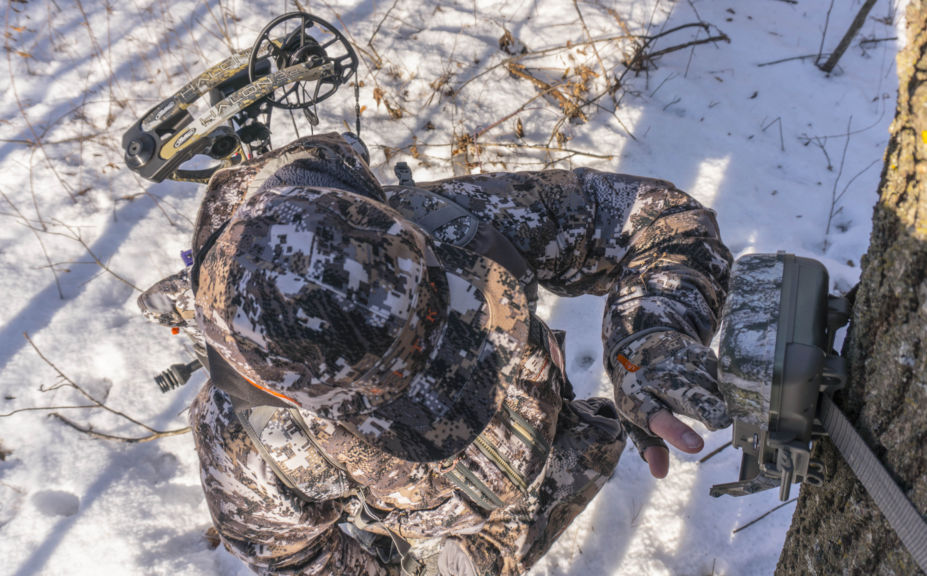
The Good Ole Days:
The good ole days of trail cam use certainly were not 15 years ago. Red glowing dots staring a monster in the face for a quick snap or even worse, a video, were certainly a step in the wrong direction when it came to spooking deer. I know that I am not alone in saying that a good ole white flash was probably not as invasive to a mature whitetail of either sex, when compared to those pesky little, devilesh eyes. 35mm film was stinky and some of the "classic" models featured an audible click that was loud enough for a hunter to hear, let alone a deer. But now, in 2016, black flash, cell cam modums and battery management systems give you the opportunity to leave a camera in the woods for 6 months or more, without even having to visit it to change a card. In fact, you can even change your trail cam settings with an app from your phone!
Do Trail Cams Spook Deer? The best advice I can give when it comes to spook-proofing a trail cam set up, is that trail cams do not spook deer, hunters do! Where you place your cams, how frequently you visit your cam, and what portion of the habitat you have to visit through to change an SD card, are the activities that spook deer. Here are 6 ways to keep from spooking deer with your trail cam:
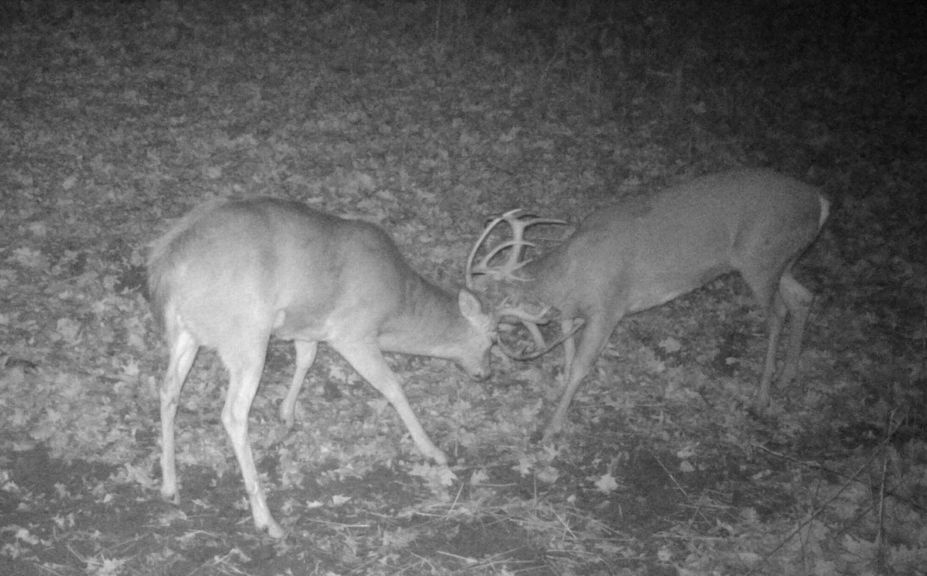
*For a complete set of strategies for using a trail cam, check out, "Top 10 Trail Cam Strategies".
1. Hang your camera at least 6' high, and pointed down
2. Avoid placing a cam directly facing the eyese of an approaching deer
3. Allow the camo from the trail cam to hide the cam, while making sure to not offer a mature buck a side profile view of the square box of the cam4. Make full use of highly social areas where deer repeat their patterns over, and over again
5. Today's trail cams can take incredible pictures from 20-40', with up to 20mp resolution, so avoid a set up that is placed within 10' of the expected crossing, or deer travel pattern, that you are watching
6. Only change an SD card when you are already in the woods to hunt. By setting up your trail cams to be easily accessed, on the way to or from a stand location, you will add no additional hunting pressure to the land that you hunt.
No Excuse:
There is no excuse with today's technology, for spooking a deer when you use a trail cam. The risk has been significantly reduced throughout the last 5 years in particular, while the potential rewards are incredible! When were the good ole days of trail cam use? Right now, and if you haven't already, you should definitely make sure that you at least try a trail cam this year, if you haven't done so already. If you are already an avid trail cam user, make sure that you deepen your use for as long as 365 days a year, to allow you to fully grasp the intimate look into the world of whitetail behavior, that is offered.
